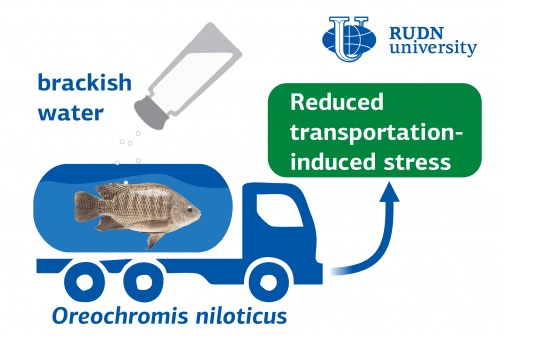BRACKISH WATER REDUCES STRESS IN TILAPIA DURING TRANSPORT
In studies carried out at the Peoples’ Friendship University of Russia (RUDN University), the effects of different salt concentrations (0, 2 and 4 g/L) added to the transport water on stress and antioxidation parameters of Nile tilapia (Oreochromis niloticus) after 3 hours of transport were evaluated.
The study concluded that the addition of 4 g/L salt to the transport water reduced stress, liver damage and oxidative stress, as well as hydromineral imbalance in Nile tilapia.
Fish transport
Fish transport is an extremely stressful but unavoidable event in aquaculture and is associated with disadvantages such as stress, hydromineral imbalance and oxidative stress. It is therefore useful to find methods to improve the health and welfare of fish during transport.
With regard to alleviating stress during transport, several studies have evaluated supplementing diets with probiotics, turmeric, glycine, anaesthetics or adding salt to the water.
Several studies have reported that the addition of salt to fish transport water decreases osmotic stress and energy expenditure.
Previous studies on the application of salt in transport water have shown that 1 and 2 g/L of salt decrease bacterial load, and 4 and 8 g/L of salt increase survival in Nile tilapia transport.
However, there are no data on the beneficial effects of salt on the stress, hydromineral balance and antioxidant capacity of Nile tilapia.
Effect of salt on water quality
One of the bottlenecks in fish transport is the deterioration of water quality, which is dangerous for the fish. The stress caused by transport increases the metabolic rate; oxygen consumption and ammonia excretion are increased.
Mitigating stress during transport may subsidise the deterioration of water quality. The researchers report that the addition of salt to the water did not provide any benefit in terms of dissolved oxygen and ammonia levels in the study water.
Stress markers
Fish transport induces stress, which is reflected in an increase in circulating cortisol. High cortisol levels trigger gluconeogenesis to provide glucose as an energy source for the cells, thus counteracting the stress.
The addition of 2 or 4 g/L salt to water reduced cortisol and/or glucose elevations in the present study, suggesting a stress-relieving effect. Furthermore, the results of the study indicate that the addition of 4 g/L salt to water can reduce stress in Nile tilapia during transport.
Osmoregulation
Stressful conditions, such as transport, increase the rate of metabolism; therefore, the rate of gill ventilation increases to facilitate gas mobilisation.
“The present results suggest that the addition of salt to water can reduce osmotic disruption in fish, which is probably due to a lower osmotic gradient between the fish body and the surrounding water,” they reported.
Liver health and antioxidant parameters
Antioxidant enzymes and non-enzymatic antioxidants protect cells from the harmful effects of oxidative stress produced by excess reactive oxygen species, which often increases after a stressful event.
In general, the antioxidant parameters show that adding salt to water can reduce the oxidative state during fish transport.
“The addition of salt to water (especially 4 g/L) can suppress the negative effects of transport-induced oxidative conditions on fish liver tissue. Less oxidative conditions lead to greater liver cell integrity and higher liver concentrations of ALT and AST,” they report.
Conclusion
“The representative results indicate that the addition of salt to water has advantages for the transport of Nile tilapia. Fish transported in brackish water showed lower stress, less liver damage, lower hepatic oxidative stress and better hydromineral balance, although there was no benefit in terms of water quality,” they conclude. According to the results of the study, 4 g/L of salt is beneficial for the transport of Nile tilapia.
Reference (open access)
Yousefi, M., Hoseini, S. M., Weber, R. A., da Silva, E., Rajabiesterabadi, H., Arghideh, M., & Delavar, F. H. (2022). Atténuation du stress induit par le transport chez le tilapia du Nil, Oreochromis niloticus, en utilisant de l’eau saumâtre. Aquaculture Reports, 27, 101378. https://doi.org/10.1016/j.aqrep.2022.101378

